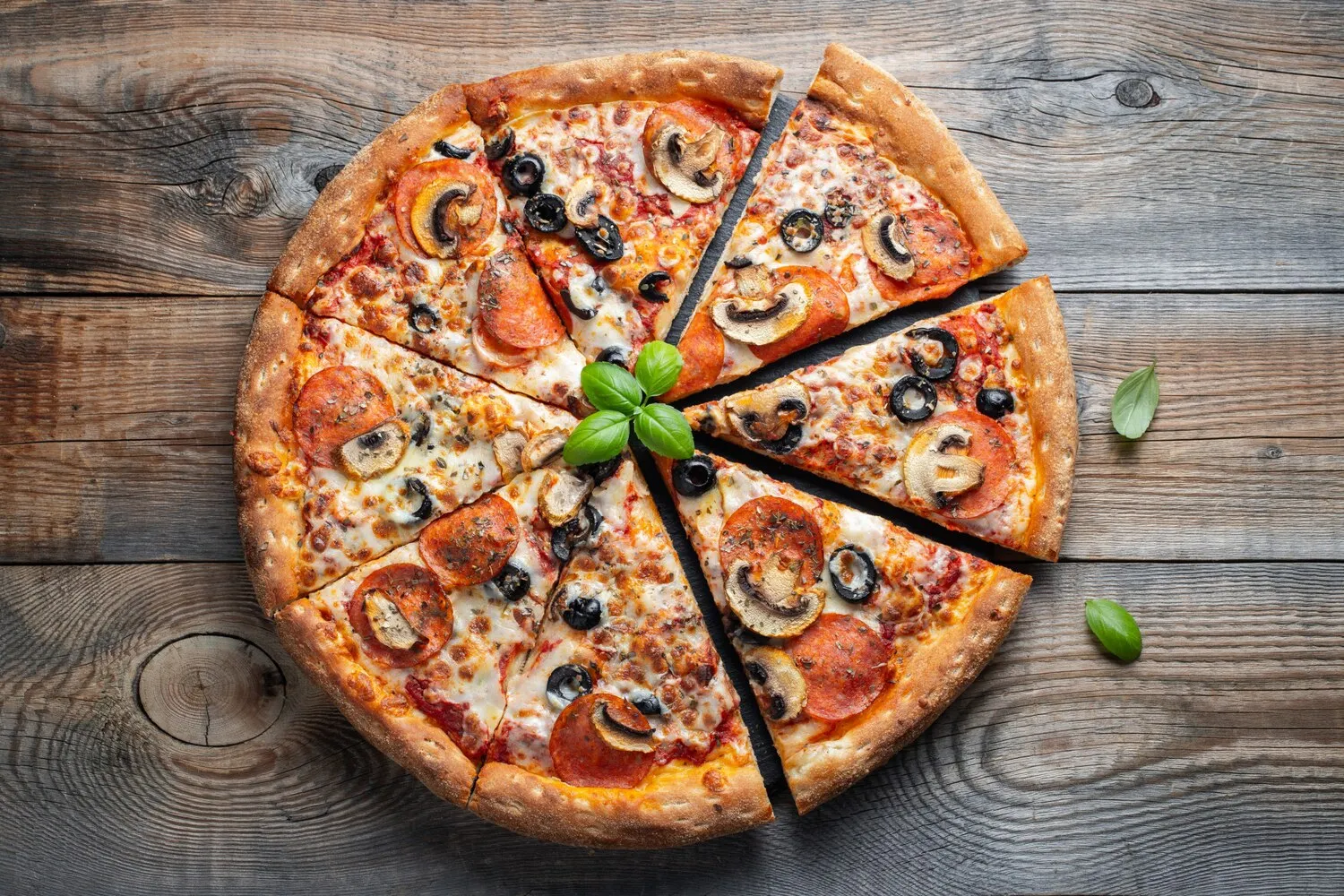
Pizza
Spaço Gourmet offers a variety of pizzas.
Nutrition Facts
* The % Daily Value (DV) tells you how much a nutrient in a serving of food contributes to a daily diet. 2,000 calories a day is used for general nutrition advice.
Spaço Gourmet
Pizza's origins can be traced back to ancient civilizations that used flatbreads as a staple food. However, the modern pizza as we know it evolved in Naples, Italy, in the 18th and 19th centuries, with the addition of tomatoes and cheese. It quickly became a popular street food for the city's working class before gaining international recognition.
Pizza has transcended its humble beginnings to become a global phenomenon, deeply ingrained in the culture of many countries. It's often associated with casual dining, social gatherings, and comfort food. The dish represents sharing, conviviality, and accessibility, adapting to diverse tastes and culinary traditions worldwide.
Regional Variations
Pizza styles vary significantly across regions, reflecting local ingredients and preferences. Neapolitan pizza is known for its thin, soft crust and simple toppings, while New York-style pizza features a larger, foldable crust. Chicago deep-dish pizza is characterized by its thick, buttery crust and generous layers of toppings. These regional variations showcase the adaptability of pizza and its ability to reflect local culinary traditions.
Pizza and Social Gatherings
Pizza is a popular choice for social gatherings, from casual family dinners to large parties. Its ease of sharing and customization makes it an ideal dish for accommodating diverse tastes and dietary needs. Pizza nights are a common tradition in many households, fostering a sense of community and togetherness.
Pizza in Popular Culture
Pizza has made numerous appearances in films, television shows, and literature, solidifying its place in popular culture. It's often depicted as a symbol of comfort, indulgence, and nostalgia. The Teenage Mutant Ninja Turtles' love for pizza is a particularly iconic example of its cultural significance.
Pizza's flavor profile is diverse, relying heavily on a harmonious blend of the dough's texture, the acidity of the tomato sauce, the richness of cheese, and the complementary tastes of various toppings. Herbs and spices often play a crucial role in enhancing the overall taste.
The foundation of pizza flavor comes from the yeast-leavened dough, which provides a slightly tangy and chewy base. Tomato sauce, often seasoned with garlic, oregano, and basil, contributes acidity and sweetness. Mozzarella cheese offers a mild, milky flavor and a satisfying stretch. Toppings like pepperoni, sausage, mushrooms, onions, peppers, and olives introduce a range of savory, spicy, earthy, and salty notes. The baking process caramelizes the sugars in the dough and cheese, adding depth and complexity to the overall flavor.
Dough Preparation
Use high-quality flour and allow the dough to rise slowly for optimal flavor and texture. Cold fermentation in the refrigerator for 24-72 hours can significantly enhance the dough's complexity and digestibility.
Topping Balance
Avoid overloading the pizza with too many toppings, as this can prevent the crust from cooking properly and result in a soggy base. Focus on using high-quality ingredients and achieving a balanced flavor profile.
Baking Temperature
Bake pizza at a high temperature (450-500°F) to achieve a crispy crust and perfectly melted cheese. Using a pizza stone or baking steel can help to distribute heat evenly and create a professional-quality pizza.
Explore additional Pizza dishes and restaurants
Explore PizzaDiscover top dining spots and culinary experiences in Governador Valadares.
Explore Governador ValadaresLearn more about the food culture, restaurant scene, and culinary heritage of Brazil.
Explore Brazil